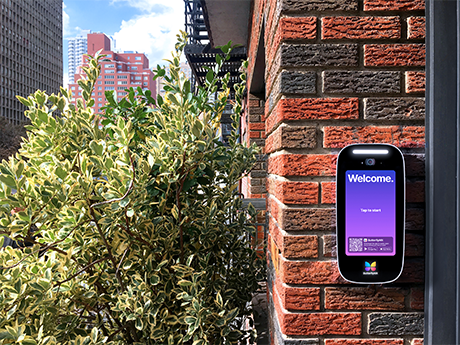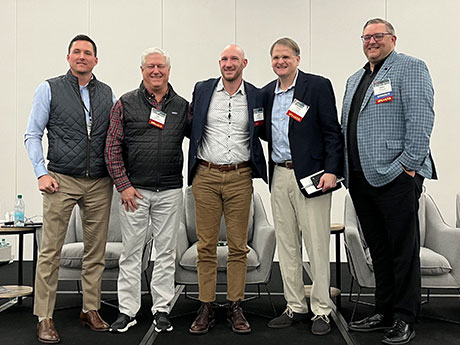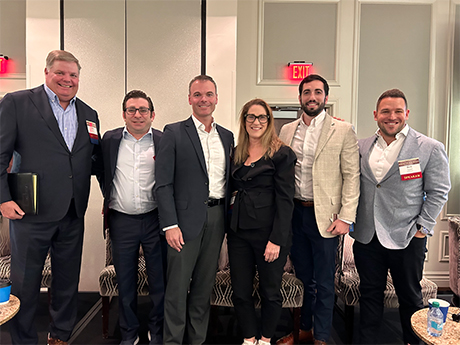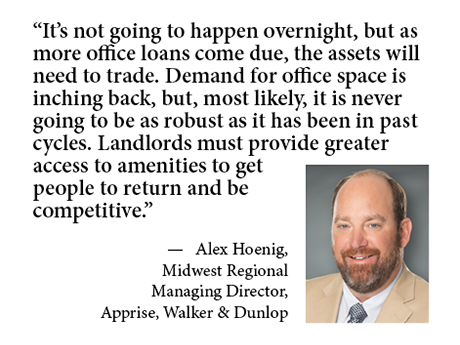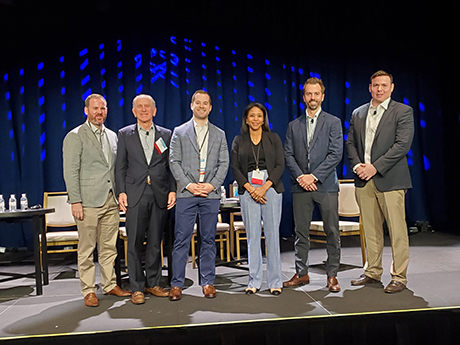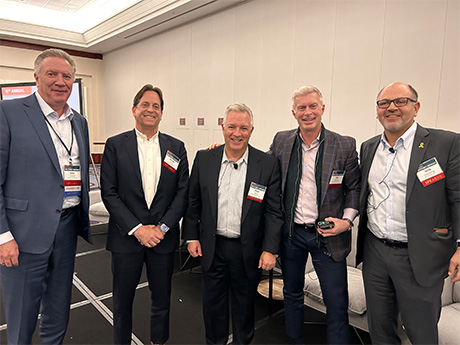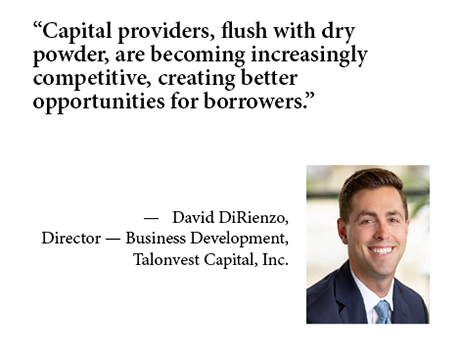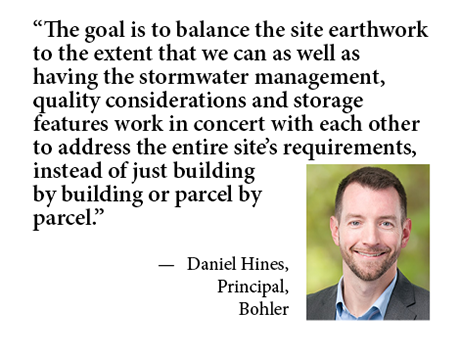Security is a top priority in the multifamily industry. Monitoring and controlling access to a property protects owners and their residents from the impacts of violent crime, theft, vandalism and trespassing. The benefits of an effective security, monitoring and access system run deep. “Access control is not just about security,” says Roger Solomon, a senior associate at Trio Advisory Group. The company offers consulting services on access control, video surveillance and other technologies for commercial real estate properties. “Access control is also about ensuring convenience for residents and staff, enhancing the overall quality of life at a community and future-proofing assets against technological advancements,” says Solomon. “The right access control system will add real value to both the property and for its residents.” The type of access control system an owner-operator installs can increase operational efficiency and net operating income, free up staff, reduce costs and lower resident turnover rates. Locks and Keys Still Popular Option The benefits of an old-fashioned lock-and-key system are clear. Mechanical locks are weatherproof and do not require electrical power or Wi-Fi connectivity. Key-controlled locks also are relatively affordable to install. According to a report from the National Apartment Association (NAA), 53 percent of property management …
Features
Conference CoverageFeaturesGeorgiaMultifamilyMultifamily & Affordable Housing Feature ArchiveSoutheastSoutheast Feature Archive
Stickiness of Renter Sets Build-to-Rent Sector Apart from Traditional Multifamily, Says InterFace Panel
ATLANTA — When considering a single-family, build-to-rent (BTR) development or acquisition, the main priority of the developer or investor is to focus on finding a place where people want to live, said Zach Persky, vice president of acquisitions for Quinn Residences. Access to jobs, retail corridors and good school districts are all important factors for potential residents. Persky was one of the speakers on the BTR panel at the 15th annual InterFace Multifamily Southeast conference, which took place Wednesday, Dec. 4 at the Cobb Galleria Centre in Atlanta. Kyle Palmer, managing partner of Palmer Real Estate Investment Services, moderated the discussion. Editor’s note: InterFace Conference Group, a division of France Media Inc., produces networking and educational conferences for commercial real estate executives. To sign up for email announcements about specific events, visit www.interfaceconferencegroup.com/subscribe. While the BTR segment may still be in its infancy, its fundamentals are solid, according to the panel. Demand comes from would-be homebuyers who are priced out of the single-family market. These purpose-built rentals have many of the same perks of for-sale homes, such as yards and private garages, without the handicaps of down payment and mortgage commitment. BTR construction completions nationally totaled more than 50,000 units …
Creative Capital, Partnerships Loom Large in Healthcare Real Estate, Says InterFace Panel
by John Nelson
NASHVILLE, TENN. — Healthcare real estate investment is at a pivotal point of this current cycle. On one hand, the investment sales market is expected to rebound heartily following a few subdued quarters. According to data from Maryland-based research firm Revista, investment sales volume for medical office buildings (MOBs) was $2.1 billion in third-quarter 2024, in line with the first two quarters of the year but down from more robust quarters in 2021 and 2022. On the other hand, funding this expected uptick in acquisitions will be more layered than ever before, even with the recent cuts to the federal funds rate by the Federal Reserve. Ben Appel, executive managing director of Newmark’s healthcare capital markets team, said that the competition level is increasing as deals come to market, but what’s more notable is the capital stack behind those bids. Editor’s note: InterFace Conference Group, a division of France Media Inc., produces networking and educational conferences for commercial real estate executives. To sign up for email announcements about specific events, visit www.interfaceconferencegroup.com/subscribe. “Today those bids have two to three different sleeves of capital behind them,” said Appel, who is based out of Newmark’s Philadelphia office. “We are seeing some of …
Content PartnerFeaturesIndustrialMidwestMultifamilyNortheastOfficeSoutheastTexasWalker & DunlopWestern
Multifamily, Industrial, Office Transaction Activity Trends Upward Amid Shifting Valuation Landscape
The spike in interest rates nearly three years ago brought investment sales to a virtual standstill, as deep disagreements over valuation between buyers and sellers dominated the market. While recent Federal Reserve cuts to the federal funds rate raised hope for a resurgence in transactions, ongoing volatility in the bond market, concerns about reemerging inflation and uncertainty over fiscal and monetary policy continued to weigh on a full-blown rebound in investment activity. The uncertain environment makes it difficult for investors to easily evaluate commercial property values, underscoring the importance of access to comprehensive, real-time data on transactions, market fundamentals and emerging trends, says Alex Hoenig, MAI, Midwest regional managing director at Apprise, Walker & Dunlop’s independent valuation firm. “Our understanding of current values for commercial real estate relies on transactions actually taking place, and sales velocity has started to inch back up,” reports Hoenig. “But there’s no question that there has been a lot of volatility in the market, which requires a local expert with access to a strong network and a constant pulse on market comparables.” Walker & Dunlop launched Apprise in 2020 to accelerate technology-driven solutions in the commercial real estate sector. Apprise serves owners and investors nationwide, …
By Taylor Williams ATLANTA — There is nothing wrong with the new interest rate environment that currently governs capital markets activity in commercial real estate, and borrowers just need to adjust their expectations, put them into historical context and get back to making deals. This is the view of at least a couple veteran lenders who spoke at the InterFace Multifamily Southeast conference on Dec. 4 at the Cobb Galleria Centre in Atlanta. The event is now in its 15th year and continues to attract hundreds of multifamily developers, investors and lenders from across the region. Editor’s note: InterFace Conference Group, a division of France Media Inc., produces networking and educational conferences for commercial real estate executives. To sign up for email announcements about specific events, visit www.interfaceconferencegroup.com/subscribe. Following two cuts totaling 75 basis points earlier this year, the target range for the federal funds rate, or the overnight interest rate at which banks lend to each other, currently sits at 4.5 to 4.75 percent. This year’s cuts marked the first monetary easing by the Federal Reserve in more than four years, and while at least a couple more slashes to the overnight rate are anticipated in the coming months, …
By Becky McLaughlin, WithMe Inc. As the seasons change, so do your residents’ needs and desires. Providing amenities and planning events that align with these shifting demands can be a game-changer for property managers. In fact, resident events have been shown to boost satisfaction, improve online reviews and impact lease renewal decisions, making them an essential tool for long-term property success. According to WithMe Inc.’s 2025 amenity outlook survey, which gathered insights from senior multifamily professionals at the country’s top property management companies, including Bozzuto, Greystar and Willow Bridge, there is a rise in resident demand for multipurpose spaces where they can relax, connect with neighbors and work. Finding ways to transform these common spaces to align with the changing seasons not only enhances resident satisfaction but also fosters a vibrant community atmosphere where people feel empowered to live, work and play year-round. Warming up the cooler months As temperatures drop, residents tend to spend more time indoors, increasing foot traffic in the lobby and shared spaces. This presents the perfect opportunity to transform these areas into cozy spots where they can comfortably work, connect and unwind. Imagine plush seating, soft lighting and a hot coffee and cocoa amenity that …
Stars Are Aligned for Healthy Seniors Housing Investment Climate in 2025, Says InterFace Panel
by John Nelson
The investment market for seniors housing is in a favorable position heading into the new year thanks to a confluence of factors, says Scott Corbin, director at Boston-based AEW Capital Management. The firm has roughly $3 billion in assets under management within this niche property type. “We’ve seen a full rebound in recovery. We’re not necessarily back to pre-pandemic [profit] margins, but we are getting close. We are seeing outsized NOI growth and outsized rent growth when you compare it to other asset classes. We have the demographic tailwinds. In addition, you have muted supply [growth],” explained Corbin, a panelist at the InterFace Seniors Housing Northeast conference, which took place Dec. 4-5 in Philadelphia. Editor’s note: InterFace Conference Group, a division of France Media Inc., produces networking and educational conferences for commercial real estate executives. To sign up for email announcements about specific events, visit www.interfaceconferencegroup.com/subscribe. Joining Corbin on stage at Live! Casino & Hotel Philadelphia were moderator Kory Buzin, director, Blueprint Healthcare Real Estate Advisors; and panelists Curtis King, executive vice president, HJ Sims; Dennis Murphy, chief investment officer, Priority Life Care; Rick Swartz, senior managing director, JLL; and Shani Walter, managing director, Omega Healthcare Investors. The daylong conference, …
Conference CoverageFeaturesGeorgiaMultifamilyMultifamily & Affordable Housing Feature ArchiveSoutheastSoutheast Feature Archive
InterFace: Multifamily Investors Are Bullish on 2025 Sales Market, Though Many Hurdles Will Carry Over into New Year
by John Nelson
Speakers on the investment sales panel at the annual InterFace Multifamily Southeast conference were overall bullish on the sector’s investment prospects in the new year. The event, now in its 15th year, was held on Wednesday, Dec. 4 at the Cobb Galleria Centre in Atlanta. To kick off the panel, moderator Paul Berry, president and COO of Mesa Capital Partners, discussed what a recovery could look like in terms of investment sales volume. Editor’s note: InterFace Conference Group, a division of France Media Inc., produces networking and educational conferences for commercial real estate executives. To sign up for email announcements about specific events, visit www.interfaceconferencegroup.com/subscribe. Berry said that in the six years leading up to the onset of the COVID-19 pandemic, annual U.S. multifamily investment sales volume hovered between $155 billion to $195 billion per year. He noted that due to robust inventory growth during that time, a “normal” yearly sales total would average out to $180 billion to $190 billion. “2021 saw ‘double normal’ — it was $350.7 billion,” said Berry. “The first three quarters of 2022 were at that same level before it slowed down by the end of the year, but it still eclipsed $300 billion.” He …
By David DiRienzo, director — business development, at Talonvest Capital, Inc. This is part two of a two-part series discussing the key drivers behind transaction volume and the steps owners can take to ensure they are well positioned going forward. As highlighted in part one, despite substantial changes in the market over the past few years, the capital markets continue to offer quality financing solutions for real estate owners. Part two of this article series delves into two key drivers of current financing activity: elective refinancing to optimize the capital stack and the initiation of new business plans. Given the plethora of value-add projects in the pipeline and the interest in undertaking new business plans as equity capital returns to the market, these financing strategies are taking on greater importance than in past years. Interestingly, elective refinancing and starting a new business plan are two scenarios where the borrower’s actions are optional because an impending maturity is not a consideration. For this reason, it is important that borrowers understand the nuances behind these strategies as well as the approach that a capital expert might take. Elective Refinancing to Maximize Investment Performance While loan maturities trigger many refinancings, owners run into a …
Some commercial real estate developers work primarily with architects and engineers to establish a project’s scope and expected cost, leaving the selection of a general contractor or project manager until they are nearly ready to break ground. And by following this traditional approach, they may be leaving money on the table. A better practice is to engage contractors during project planning, industry experts advise. That’s because experienced contractors can provide practical insight into pricing and availability of materials and labor, informing critical planning decisions. Those same builders can be a sounding board for site civil engineers mapping out site preparation, utility installation, access and sequencing for the various tradespeople working on a project. “Involving a general contractor early is particularly beneficial for large-scale or phased construction projects,” says Daniel Hines, a principal in Bohler’s Charlotte office. “It enables us to approach the design more strategically, reduce costs and deliver more accurate timelines.” “The overall goal of getting a general contractor and an engineer working together is to maintain your schedule and your budget,” agrees Jeff Mitchell, director in the Charlotte, North Carolina office of Duffey Southeast Construction Inc. “Engineers are the experts at designing projects, but ultimately it is the …


